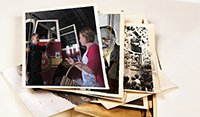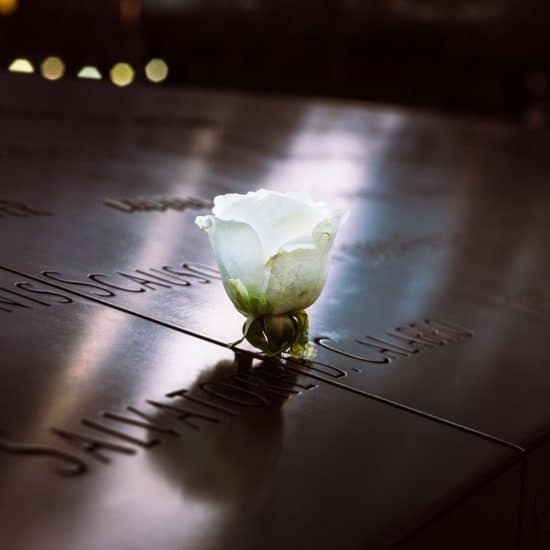It’s emblazoned on the sign outside Gayton Baptist Church in Richmond. Belong. Believe. Become.
Those three verbs — in various word orders — crop up frequently in discussions on evangelism and a congregation’s role in it. For some, it’s a promising harbinger of new approaches to reach non-Christians.
 |
“I’m hopeful about the discussion on belonging, becoming and believing,” said Keith Herron, pastor of Holmeswood Baptist Church in Kansas City, Mo.
A different word sequence — believe, become, belong — described the normative pattern of coming to faith in the 20th century, said Mark Tidsworth, president of Pinnacle Leadership Associates, a church consulting group.
Converts “first gave intellectual assent to a body of beliefs,” Tidsworth wrote at EthicsDaily.com late last year. “Then pilgrims ‘belonged’ to a church as members. Then we worked to develop them as believers, growing and maturing in the faith.”
That progression isn’t adequate in a postmodern world, Tidsworth maintained.
“First, postmodern people need to experience Christ through real-live people before they can move toward belief,” he said. “When they experience this genuine faith, observing Christ-followers giving themselves in love for the good of the world, then they think there may be something to this. Then they are interested in participating with this group.
“After experiencing this group actually loving one another, then they come to identify with the group,” he said. “Thus, the opportunity to believe unfolds. Based on this experience, on belonging with this group, and becoming a different person, then I am willing to risk that Jesus Christ is real and trust these beliefs.
“The outcome is the same — faith in Christ — but the predictable pathway we plaster on signs is all a-jumble.”
The new pattern suggests something different from the seeker-sensitive worship services that bloomed at the end of the 20th century. The belong/believe/become sequence could result in congregations with deeply connected members — who have not yet professed faith in Christ.
“Some of the most incredibly rich experiences I ever had as a pastor occurred when someone came into the circle of our church in a variety of ways — long before they ‘believed,’” said Mike Queen, retired pastor of First Baptist Church in Wilmington, N.C. “I can tell you stories of men who were in prison and tithed to the church, or guys who played softball and basketball with our church for years ‘before’ they came to a place of belief. Because they felt they belonged, they were finally able to come to a place of belief.”
Jim Somerville, pastor of First Baptist Church in Richmond, finds something of that pattern in the Gospels.
Jesus “is not trying to make converts; he’s trying to make disciples, a word that could also be translated apprentices,” said Somerville. “And so he calls some fishermen to follow him, and they do. They listen to him preach and teach. They watch him help and heal. He sends them out to try their hand at the same kind of work he’s been doing. Finally, halfway through the Gospel [of Matthew], he asks, ‘Now who do you say I am?’ And that’s when Peter is able to answer, ‘You are the Christ, the Son of the Living God!’
“Suppose we made disciples like that?” Somerville asked. “Suppose we simply invited people to come and join us in the kingdom work we were doing as we, ourselves, followed Jesus’ example? And when they asked: ‘Why are you doing all this? Why are curing the sick, cleansing the lepers, raising the dead, casting out demons, and preaching the good news of the coming kingdom?’ … We would say: ‘Because of Jesus. Because it’s what he did. Because it’s what he taught us to do.’”
That approach might overcome a significant obstacle to evangelism, church consultant George Bullard said. “Most Christians don’t have unbelieving friends,” he said.
What’s more, he cited studies indicating new Christians typically lose their unchurched friends within five years after their conversion.
Phil Faig, pastor of Gayton Church, said the belong/believe/become sequence doesn’t supplant the ultimate goal.
“While people can do really good things before [coming to] faith, they really can’t become all that God created them to be until they are reconciled to him through Jesus,” Faig said. “We routinely invite non-Christians to volunteer and join us on mission, but the truth is they won’t become what they need to be before faith.”
But how a congregation identifies its members, or belongers, isn’t the only characteristic of evangelistic-savvy churches, say some. Size matters, too.
The widespread assumption that large churches —which Bullard defines as those with a weekly attendance of 1,000 or more — are reaching significant numbers of “pre-Christians” isn’t supported by research, he said.
They are growing at an average of 8 percent each year, according to a study by the Hartford Institute for Religion Research. “But when you do the hard analysis of additions, upwards of 90 percent are biological or transfer growth,” said Bullard. “Ten percent or less is conversion growth.”
The Hartford study found a similar dynamic: Only 6 percent of attenders at megachurches — which it defines as those with a weekly attendance of 2,000 or more —never had attended worship services before. “It is clear that the majority of megachurch attenders are not necessarily new to Christianity,” the study concluded.
Typically, megachurches’ transfer growth is from small- to medium-sized churches, Bullard said. Smaller churches are better at reaching “pre-Christians,” he said — a pattern consistent with his belief that evangelism is more effective in one-on-one and small-group settings.
Most effective of all? New churches, Bullard reported. “One of the biggest reasons to start new churches is to reach pre-Christians and the unchurched,” he said. “Churches full of churched people often have too many barriers.”
Robert Dilday is managing editor of the Religious Herald.






